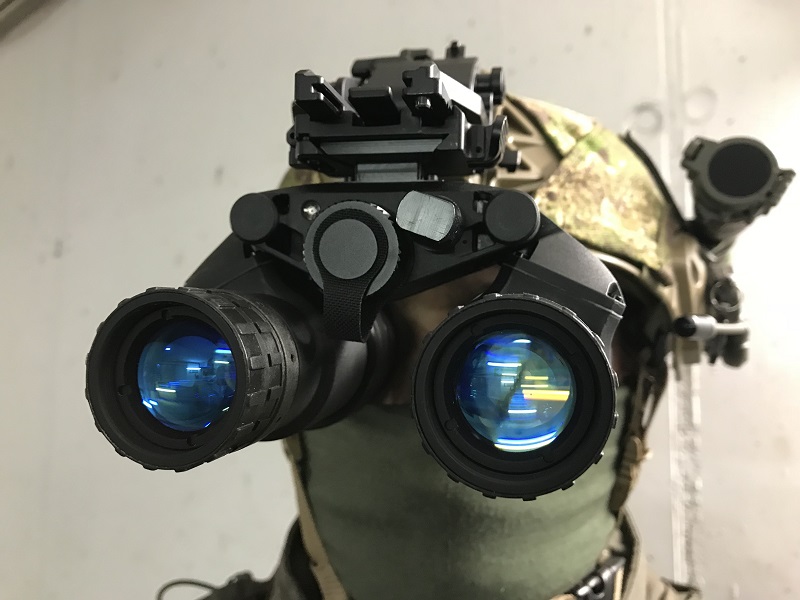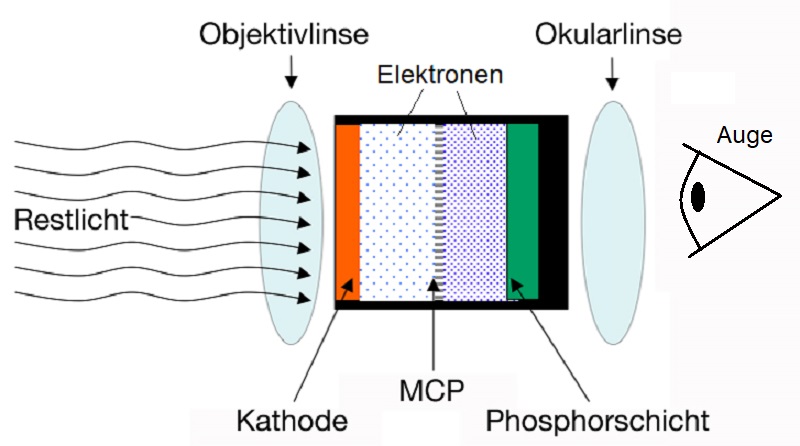Get the weekly SPARTANAT newsletter.
Your bonus: the free E-Book from SPARTANAT.

How does a night vision device work
Night vision technology may seem like magic in our high-tech era, but it's actually based on science dating back to the 1940s. This article explains how night vision devices work, utilizing light multiplication and image intensifier tubes.
Being able to see at night is still infused with a touch of magic in this highly technological age, but we can reassure you, it does not involve witchcraft, just technology. And this technology is not even particularly new, as there were first models around the 1940s. Now, let's explain how night vision devices work.
 All residual light enhancers work on the basis of light multiplication in the visible and near-infrared range up to about 1400 nm. In the further infrared range, the thermal imaging devices are located, which allow you to see temperature in a "magical way." The night vision device consists of a lens, an image intensifier tube, a power source, and an eyepiece. Thus, the heart of a night vision device is the image intensifier tube.
All residual light enhancers work on the basis of light multiplication in the visible and near-infrared range up to about 1400 nm. In the further infrared range, the thermal imaging devices are located, which allow you to see temperature in a "magical way." The night vision device consists of a lens, an image intensifier tube, a power source, and an eyepiece. Thus, the heart of a night vision device is the image intensifier tube.
The existing ambient light (residual light) emitted by the observed object reaches the lens. Through the lens, an image is projected onto the photocathode similar to a camera. Due to the external photoelectric effect, photoelectrons emerge from each illuminated point on the photocathode and are accelerated by a high electric voltage (typically 10 to 17 kV) over the distance to the phosphor screen. There, they create a light spot through cathodoluminescence, the brightness of which is proportional to the incident light. This allows a monochrome, usually greenish-yellow, amplified image of the object to be viewed on the output side. This corresponds to the operation of a Generation 1 device.
 In image intensifier tubes of Generation 2 and 3, there is an additional component in the vacuum area between the photocathode and the phosphor screen, the microchannel plate (MCP). This multiplies the electrons emitted by the photocathode by a multiple, making the image brighter and more detailed. However, we will delve into the structure of Generation 2 and Generation 3 tubes in a separate BASICS article.
In image intensifier tubes of Generation 2 and 3, there is an additional component in the vacuum area between the photocathode and the phosphor screen, the microchannel plate (MCP). This multiplies the electrons emitted by the photocathode by a multiple, making the image brighter and more detailed. However, we will delve into the structure of Generation 2 and Generation 3 tubes in a separate BASICS article.
An interesting fact is that a night vision device is an analog technology. The only analog technology that could surpass the existing digital ones. The question is, for how long, as digital technology is catching up — keyword SIONYX.
We have introduced the new SPARTANAT BASICS category for you. With this, we present you the basics of things you've always wanted to know how they work.
MORE AN/PVS-31 on SPARTANAT:
– Hot Summer Special – out in the field with modern night vision devices
– Tactical Tip: Getting used to night vision devices
– HOW TO: Don't lose your battery pack
– HOW TO: Fighting with Night Vision
– REVIEW: L3 PVS-31 Battery Pack
– REVIEW: L3 Harris AN/PVS-31 BNVD Night Vision Device
– WILCOX Mounts: the agony of choice
Special:
– BASICS: How does a night vision device work
– PHOTO FILE: PVS-31 Real Deal versus Dummy
SPARTANAT is the online magazine for Military News, Tactical Life, Gear & Reviews.
Send us your news: [email protected]
Ad
similar
Get the weekly SPARTANAT newsletter.
Your bonus: the free E-Book from SPARTANAT.



